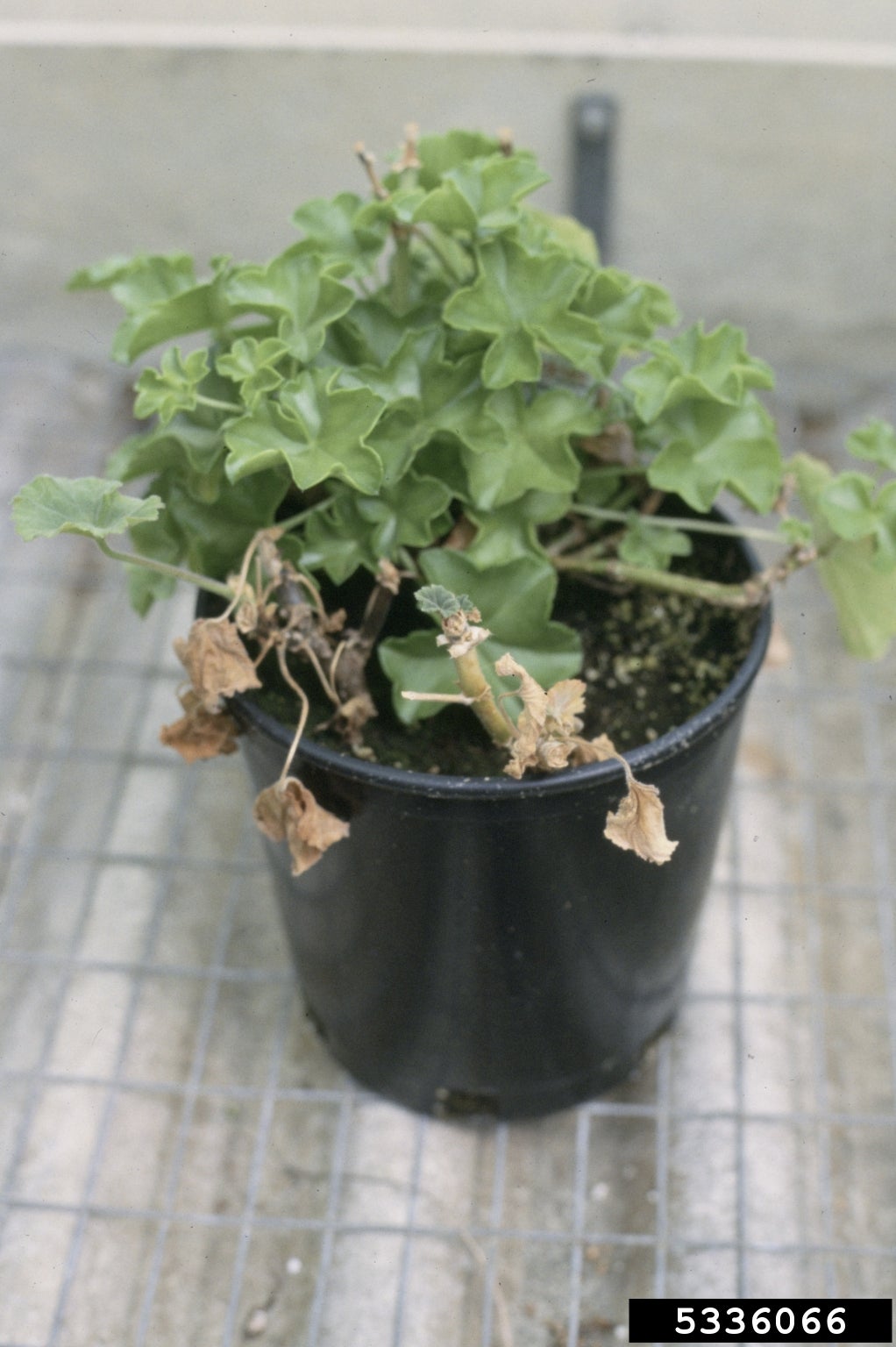Geranium Leaf Spot And Stem Rot: What Causes Bacterial Wilt Of Geraniums


Bacterial wilt of geraniums causes spotting and wilting on leaves and rotting of stems. It is a damaging bacterial disease that is most often spread by using infected cuttings. This disease, also known as leaf spot and stem rot, can quickly destroy your geraniums.
Get to know the signs and how to prevent its spread in your indoor or garden.
Signs of Leaf Spot and Stem Rot on Geraniums
There are a few characteristic signs of this disease. The first is the spot formation on leaves. Look for small spots that are circular and appear water-soaked. These spots will quickly get larger and eventually the leaves will begin to wilt.
Other signs you may notice on geranium leaves are yellowish-brown spots. These emerge between veins and radiate outward making a pie piece shape. This is followed by the collapse of the leaf. Signs of the disease on leaves may emerge alone or with other symptoms of wilt.
Sometimes, the leaves on an otherwise vigorous geranium will just simply wilt. You may also see signs of the disease in the stem. The stems turn darker and ultimately turn black before collapsing completely.
Causes and Spread of Geranium Leaf Spot and Stem Rot
This is a bacterial geranium disease caused by Xanthomonas pelargonii. These bacteria can move through and infect an entire plant. Plant matter in the soil can carry viable bacteria for a few months. The bacteria also survive on surfaces such as tools and benches.
Xanthomonas can spread and cause disease by water splashing up from the soil and onto leaves, through tools used on contaminated plants, and through whiteflies.
Sign up for the Gardening Know How newsletter today and receive a free copy of our e-book "How to Grow Delicious Tomatoes".
The best thing you can do to manage geranium leaf spot and stem rot is to use disease-free cuttings and transplants. Be careful when purchasing or sharing geraniums for this reason.
Avoid splashing water on geraniums and try to keep leaves from getting wet. This can prevent the spread of the bacterial infection.
Also, keep all tools used on geraniums sterilized to prevent disease spread.

Mary Ellen Ellis has been gardening for over 20 years. With degrees in Chemistry and Biology, Mary Ellen's specialties are flowers, native plants, and herbs.